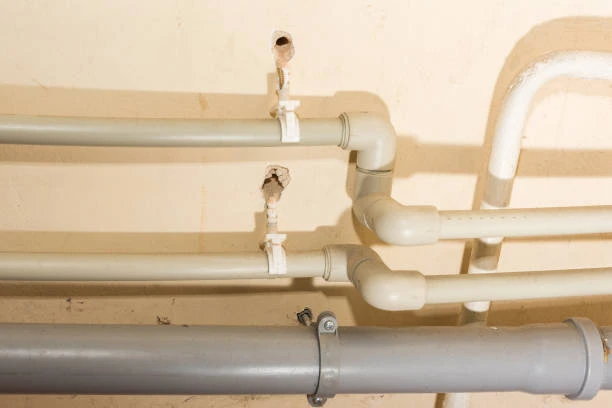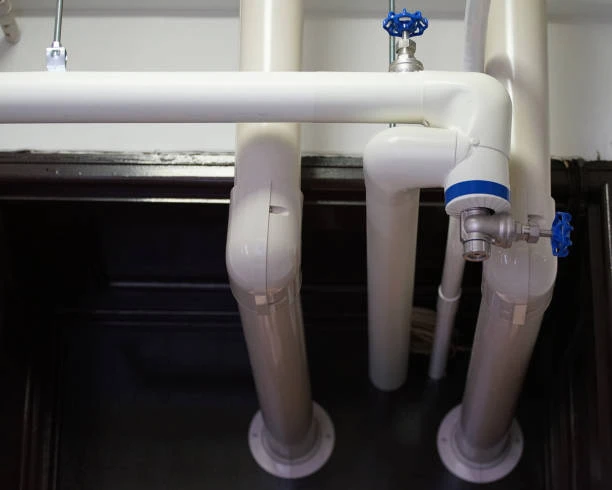IoT Integration Solutions for Smart Monitoring of PEX Systems
As industries adopt smarter technologies, the integration of IoT (Internet of Things) into PEX piping systems has become a promising advancement. These smart systems allow real-time monitoring of fluid flow, temperature, pressure, and leak detection, making them invaluable in both residential and industrial settings. When combined with components such as clutch PEX mechanisms, which allow quick and secure connections, the result is a highly efficient, responsive and intelligent pipeline infrastructure.
In this article, we explore how IoT enhances the monitoring and management of PEX systems. We cover essential questions, explain the fundamentals of PEX piping, explore industry applications, and provide guidance on selection and installation.
Frequently Asked Questions (FAQ)
1. What is a clutch PEX fitting?
A clutch PEX fitting allows a secure, quick-connect mechanism between pipes and components, often used in combination with IoT devices for modular piping designs.
2. How does IoT improve PEX piping systems?
IoT integration enables real-time monitoring of temperature, pressure, flow, and leak detection through connected sensors and software dashboards.
3. Are smart PEX systems only for industrial use?
No. IoT-enabled PEX systems are increasingly used in homes, commercial buildings, laboratories, and even agricultural irrigation systems.
4. Can existing PEX installations be upgraded with IoT features?
Yes. Many IoT solutions are modular and can be retrofitted onto existing PEX systems without replacing the entire infrastructure.
5. Is it expensive to implement smart PEX monitoring?
Initial costs may be higher, but savings from improved maintenance, leak prevention, and energy efficiency make it cost-effective over time.
Definition and Characteristics of PEX Piping Systems
PEX, short for cross-linked polyethylene, is a type of plastic tubing known for its flexibility, durability, and suitability in hot and cold water applications. Its molecular structure is modified through cross-linking, which enhances its strength and chemical resistance.
Key Characteristics:
Flexibility: Allows easier routing through walls and around obstacles.
High Temperature Resistance: Performs well in both hot and cold environments.
Corrosion and Scale Resistant: Does not degrade like metal pipes.
Long Service Life: Often exceeds 50 years under normal conditions.
Ease of Installation: Especially when used with tools like clutch PEX connectors and expansion fittings.
IoT Compatibility: Integrates easily with sensors and smart valves for intelligent monitoring.
Common Uses and Industries for PEX Piping Systems
While PEX is widely recognised in residential plumbing, its applications extend far beyond household use, especially with the introduction of smart monitoring capabilities.
Common Use Cases:
Residential Plumbing: Hot/cold water distribution and radiant floor heating.
Smart Buildings: Automated leak detection and flow monitoring via IoT.
Commercial Facilities: Water supply and waste lines with intelligent control.
Agriculture: Precision irrigation and water monitoring.
Healthcare and Labs: Clean water delivery with purity sensors.
Industrial Plants: Chemical transport and process water management.
IoT-enhanced PEX systems offer benefits such as automatic alerts, predictive maintenance, and optimised water usage, contributing to sustainability and safety.
Buying Guide: Choosing the Right PEX for Smart Monitoring Systems
Selecting the correct PEX system involves more than just picking a pipe. Factors like compatibility, certification, and ease of connection—especially with smart features—are critical.
1. Material Type (PEX-A, B, C)
PEX-A: Most flexible; ideal for expansion fittings.
PEX-B: Less flexible, but lower cost and excellent for long runs.
PEX-C: Moderately flexible and cost-efficient.
2. Clutch PEX Fittings
These fittings enable fast, tool-less connections, ideal for modular systems or where quick maintenance is needed. Look for corrosion-resistant materials and compatibility with IoT-enabled valves.
3. Colour Coding
Red: Hot water
Blue: Cold water
White or Grey: Universal
Black: Often used for outdoor or industrial use
Colour coding helps with organisation and maintenance in large or complex systems.
4. Certifications
Look for the following to ensure safety and quality:
NSF/ANSI 61 (Drinking Water System Components)
ISO certifications
WRAS (UK water regulation compliance)
5. Smart Compatibility
If you plan to integrate IoT monitoring:
Ensure pipes and fittings are compatible with temperature, flow, and pressure sensors.
Choose PEX systems with built-in sensor ports or options for third-party attachments.
Installation Tips and Best Practices
Installing a smart PEX system involves both mechanical and digital preparation. Using the correct tools, such as PEX expansion tools or clutch PEX fittings, ensures a reliable base for IoT devices.
1. Use the Right Tools
PEX Cutters: Ensure clean, square pipe ends.
Clutch PEX Tools: Allow snap-fit installation without crimping.
Sensor Integration Tools: Some sensors require calibrated tightening or sealing.
2. Plan for Sensor Placement
Install sensors at strategic points such as:
Entry and exit points
High-risk leak areas
Pump or pressure zones
Ensure access for maintenance or replacement.
3. Use Expansion or Compression Fittings as Needed
Depending on PEX type and application, choose:
Expansion fittings for high flexibility and larger diameters
Compression or clutch fittings for fast installation
4. Leak Testing and Calibration
Once installed, test for pressure tolerance and ensure all sensors are calibrated for accurate readings.
5. Secure Network Connections
IoT sensors should connect securely via Wi-Fi, Bluetooth, or wired connections, depending on network infrastructure and data security protocols.
PEX vs Other Pipe Materials in IoT Applications
| Feature | PEX | Copper Pipe | PVC/CPVC | Stainless Steel |
|---|---|---|---|---|
| IoT Integration | Easy with sensor kits | Limited (requires adapters) | Moderate (rigid structure) | Limited but durable |
| Flexibility | High | Low | Low | Very Low |
| Installation Speed | Fast (with clutch PEX) | Slow | Moderate | Slow |
| Corrosion Resistance | Excellent | Moderate | Moderate | Excellent |
| Cost | Moderate | High | Low | Very High |
| Suitable for Retrofitting | Yes | Often difficult | Moderate | Difficult |
PEX piping clearly stands out for smart systems, offering both mechanical and digital adaptability.
Conclusion
IoT is reshaping how we manage water infrastructure, and PEX piping is perfectly positioned to take advantage of this shift. With its combination of flexibility, durability, and compatibility with clutch PEX fittings and smart sensors, PEX allows for real-time control, predictive maintenance, and optimised efficiency.
Whether you’re upgrading an existing system or building from scratch, integrating IoT into your PEX network offers immediate and long-term benefits—from cost savings to improved safety. As demand for intelligent infrastructure grows, smart PEX systems are becoming the go-to solution in residential, commercial, and industrial settings.
Contact Us
IFAN is a trusted Chinese manufacturer with over 30 years of experience in plastic pipes, fittings, and valves. Our products support smart monitoring solutions and are ideal for both traditional and IoT-enabled systems. Whether you’re looking for clutch PEX components or advanced sensor-compatible piping, we have the right solution.
For more information,pls visit our webside https://waterpipefitting.com/
Pls Mailto: [email protected]
Whatsapp: +86 15088288323
We respond to all emails and faxes within 24 hours. Contact us today to learn more about our wide range of reliable and cost-effective piping systems.














Recent Comments